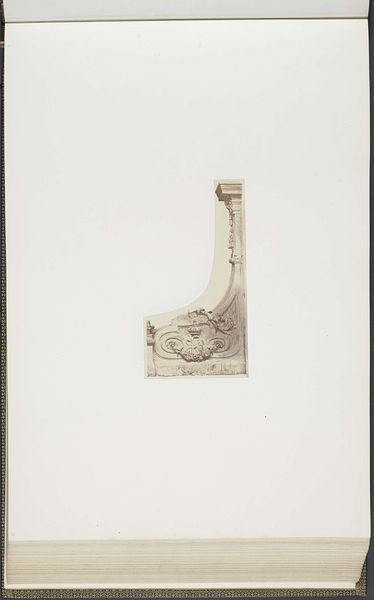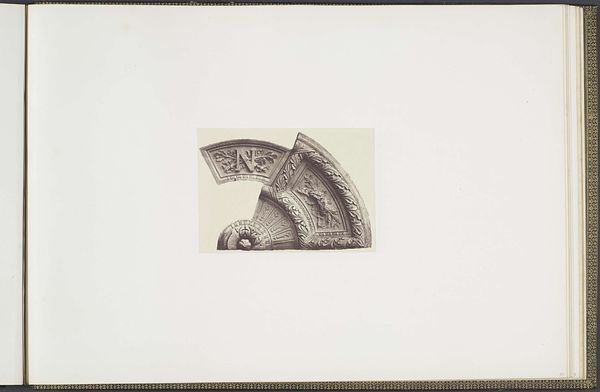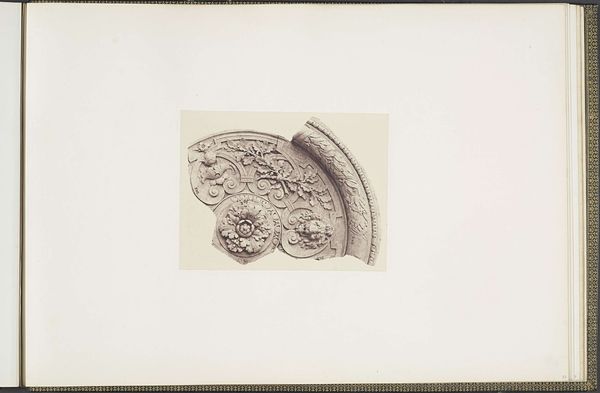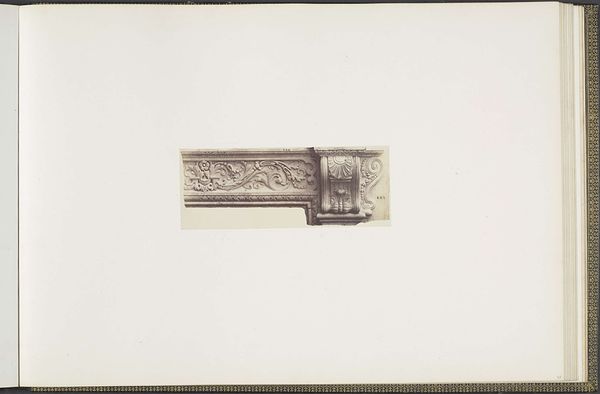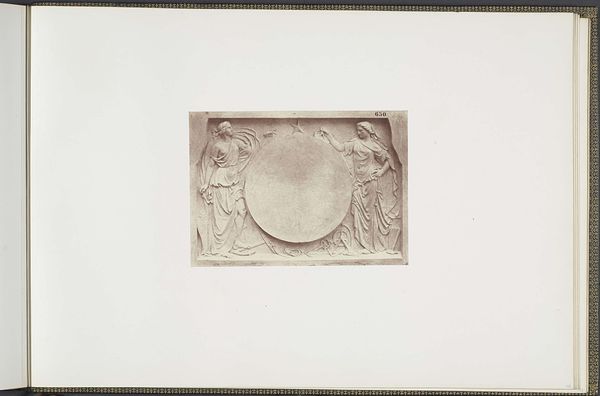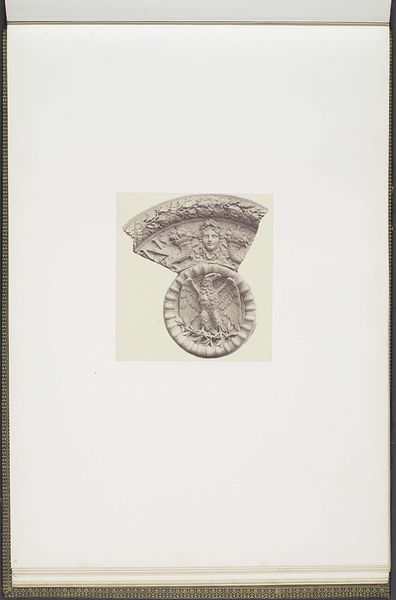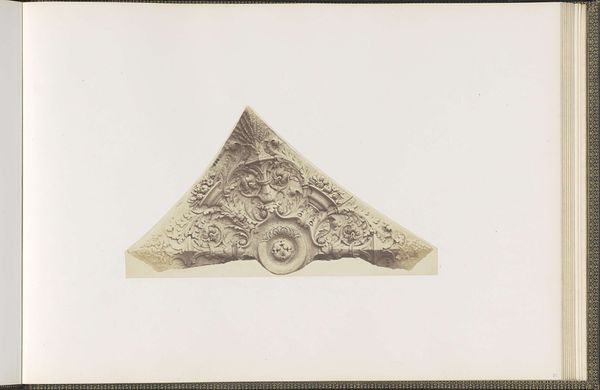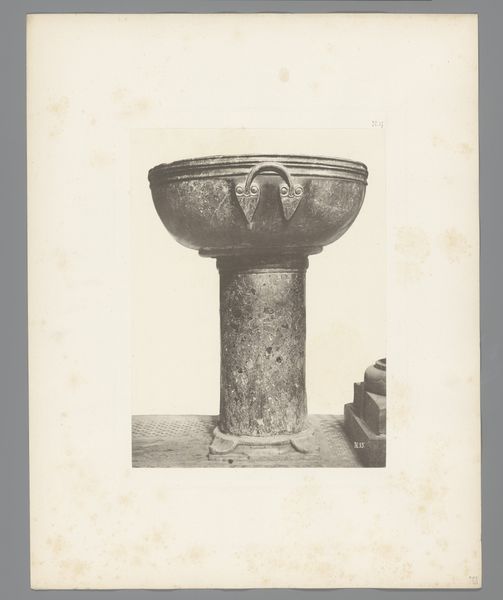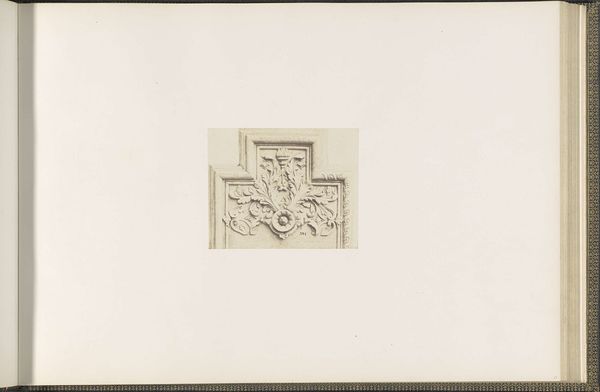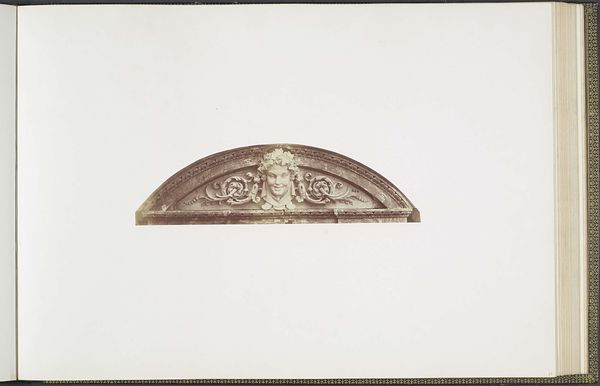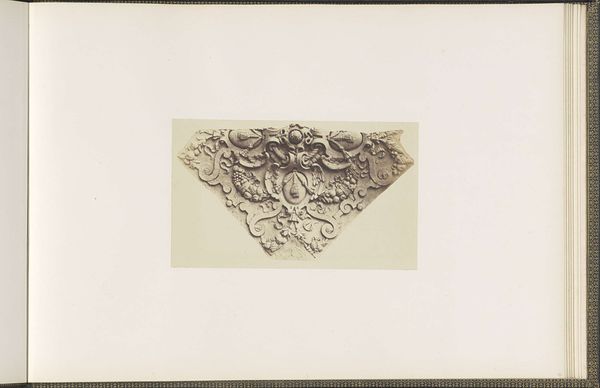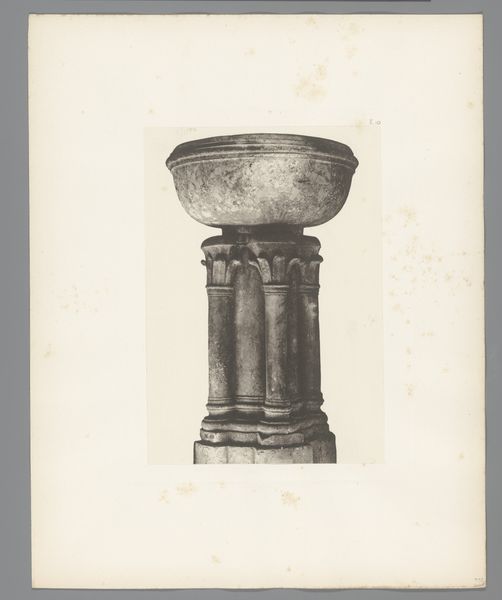
Gipsmodellen voor een gewelfversiering van het Palais du Louvre door Victor Corbel c. 1855 - 1857
0:00
0:00
edouardbaldus
Rijksmuseum
print, photography, collotype, architecture
# print
#
photography
#
collotype
#
geometric
#
decorative-art
#
architecture
Dimensions: height 378 mm, width 556 mm
Copyright: Rijks Museum: Open Domain
Curator: What a fascinating collotype print by Édouard Baldus! Dating back to the mid-1850s, it documents the plaster models made by Victor Corbel for ceiling decorations in the Louvre. Editor: The image feels so incomplete. Almost like a relic, pulled from a destroyed site, or a corner fragment discovered from some majestic architectural design. Curator: Indeed. Consider the context—the rebuilding of the Louvre under Napoleon III was a project intrinsically linked to projecting power. Baldus was commissioned to document this grand undertaking, an undertaking of intense political weight during the Second Empire. The architectural photography here wasn't merely documentation, it was construction of the very narratives power uses to sustain itself. Editor: Absolutely. And even without knowing its place in such a system, one reads instantly a certain symbolism within it, a grandness represented through these ornate decorations – those carefully sculpted fruits for instance, suggest wealth and abundance. The floral motif where the structure curls is particularly important too—almost womb-like and indicative of birth and renewal. Curator: Precisely. This ornamentation acted as visual rhetoric, subtly reinforcing the empire’s image of prosperity and historical legitimacy, connecting itself to classical traditions through its ornate aesthetic style. Think about how buildings reinforce ideology in so many overt and covert ways through image association. Editor: Thinking on it from that viewpoint makes me think even harder of that negative space framing the model. Why did Baldus choose this way to compose the image, the off-white creating the void into which this object emerges like a find, a memory or thought one had forgotten only to see re-materialize. Curator: He was interested in the possibilities collotype could achieve. Perhaps by situating this image the way he did, we ponder our own roles as active viewers and acknowledge this process isn't as transparent as some may think, inviting a critical look. Editor: Looking closely, it speaks to our own act of perceiving memory and our shared cultural narratives that come into play at any viewing moment. Thank you. Curator: Thank you. I never considered the role our memory plays here before as deeply.
Comments
No comments
Be the first to comment and join the conversation on the ultimate creative platform.
